Do you have a delightful dream of slipping away a sunny afternoon in your very own rose room?
It is easier than you may think to surround yourself with a gorgeous rose hedge that delineates your garden spaces.
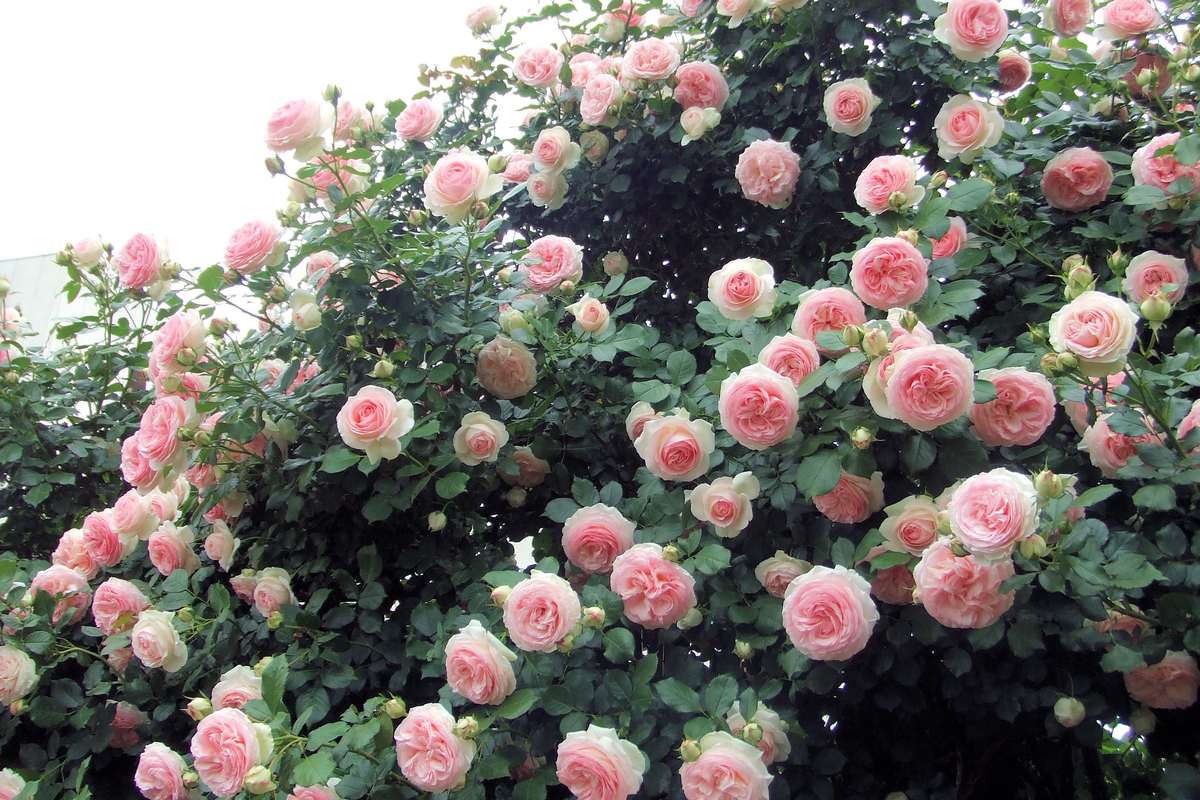
A rose hedge will inspire a feeling of privacy and security while being nestled in amongst the fragrant bounty of beautiful blossoms.
1. Security and Privacy
A rose hedge may grow just 2 to 3 feet tall to perfectly delineate a garden space.
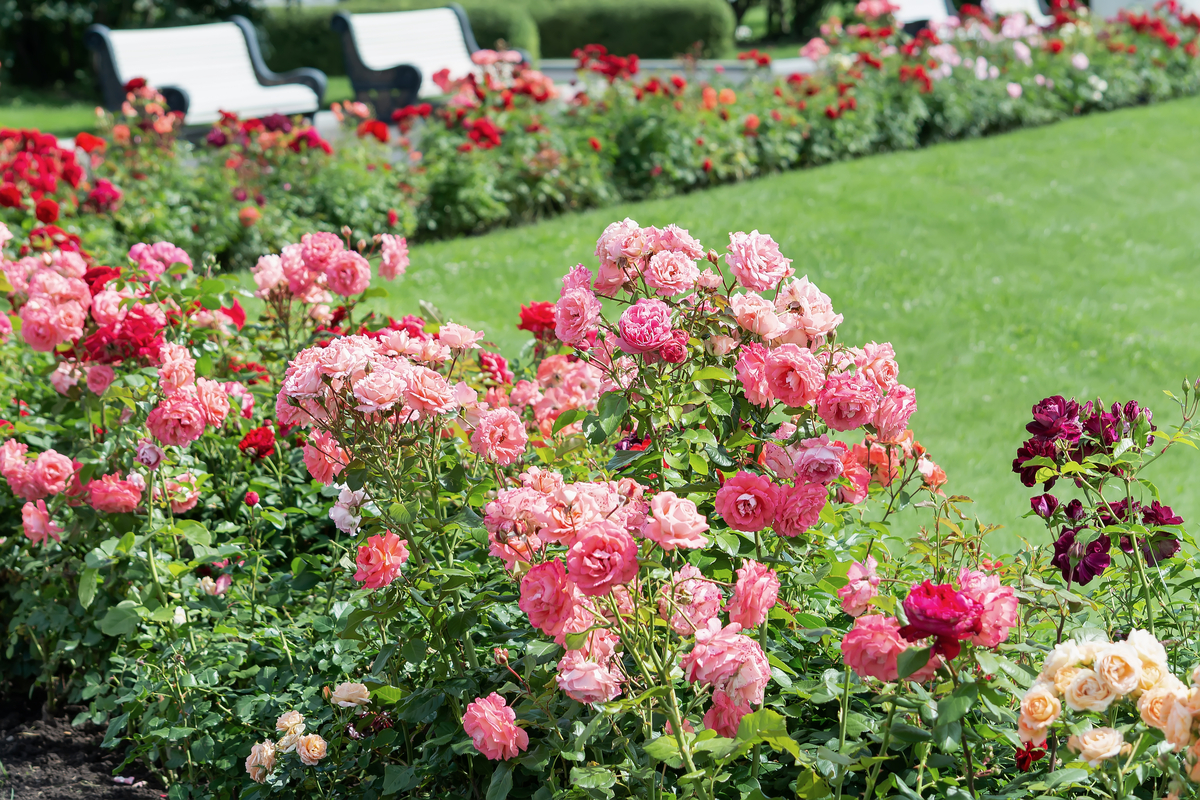
However, shrub roses might reach 8 to 10 feet high and 6 feet wide and provide a lot of privacy and security.
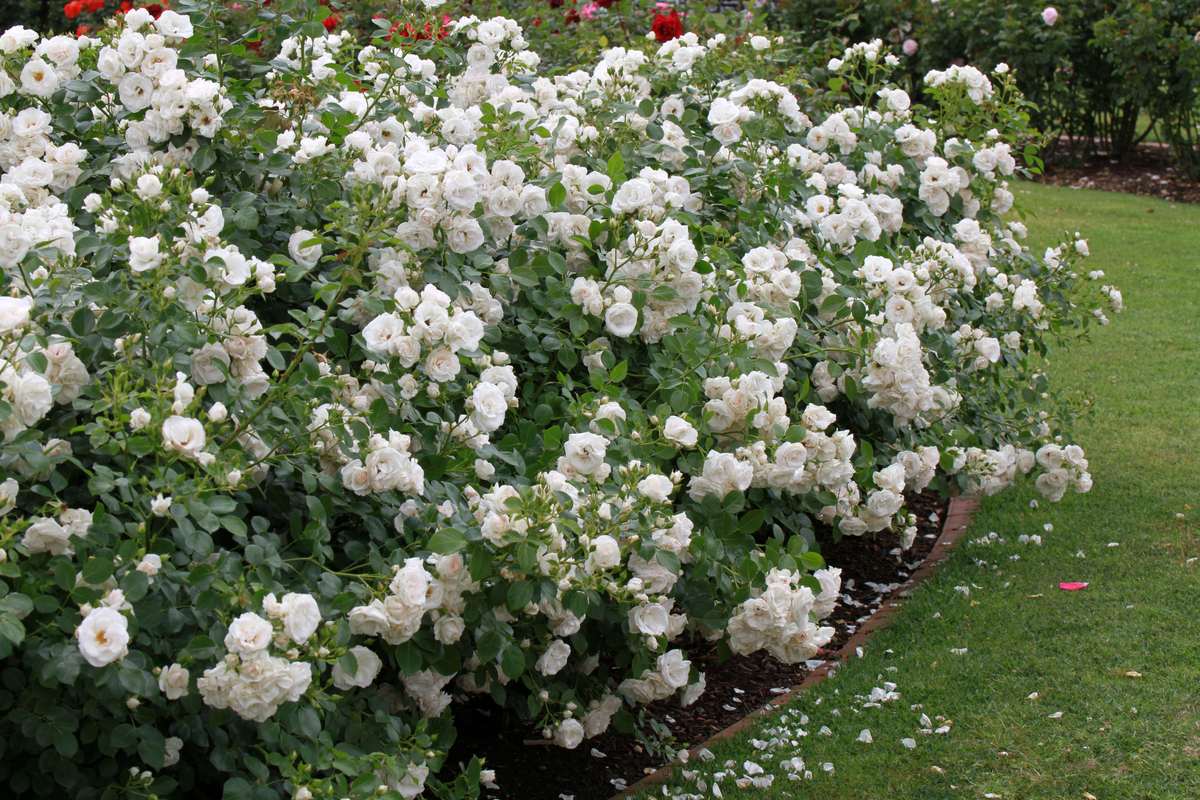
The sky is the limit if you want to grow climbing roses to ramble over a support structure, pergola, or fence.
2. Waves of Color
Every shade of pink, red, orange, peach, yellow, and white are familiar rose colors.
Bicolor, deep purple to almost black, and abundant multicolor or changing colored roses are also thoroughly adored.
A hedge smothered in your favorite-colored rose is unforgettable.
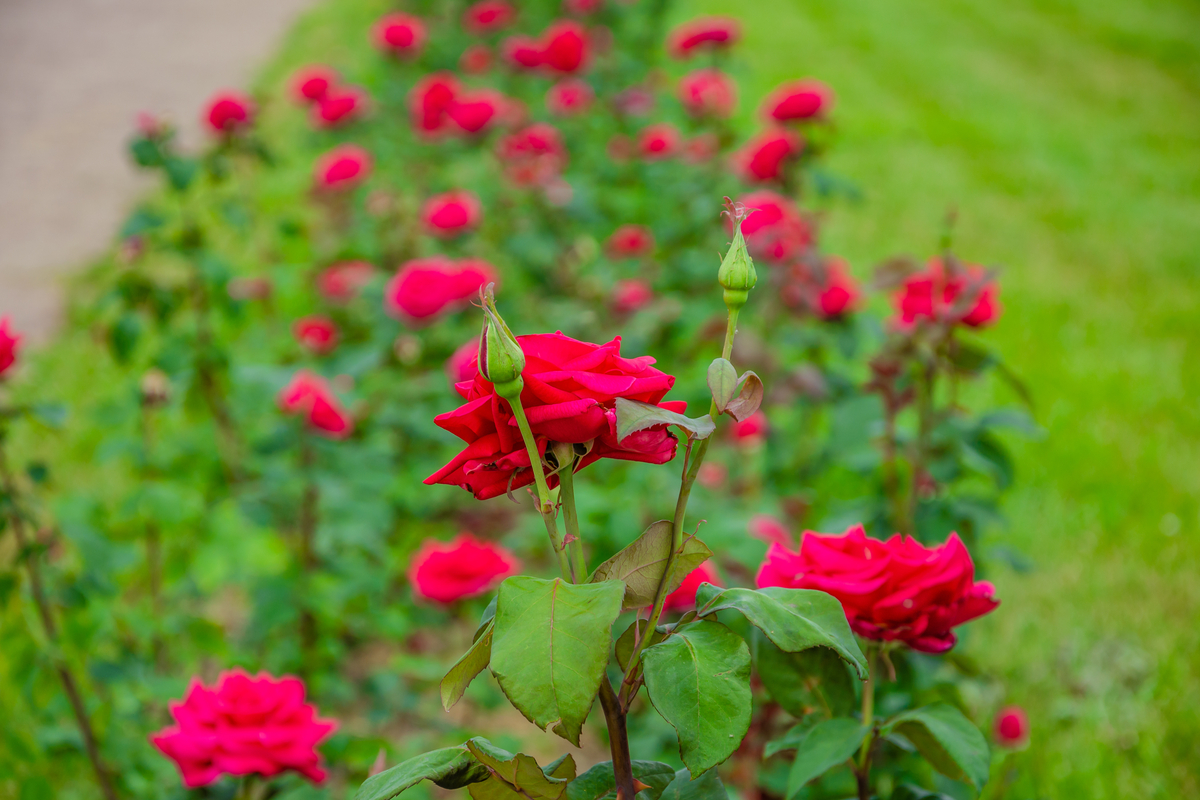
3. A Rose Hedge Has Four Seasons of Interest
Glossy leaves in spring, buds bursting into blossom for weeks on end in summer, fall leaf color followed by graceful rose hips through winter.
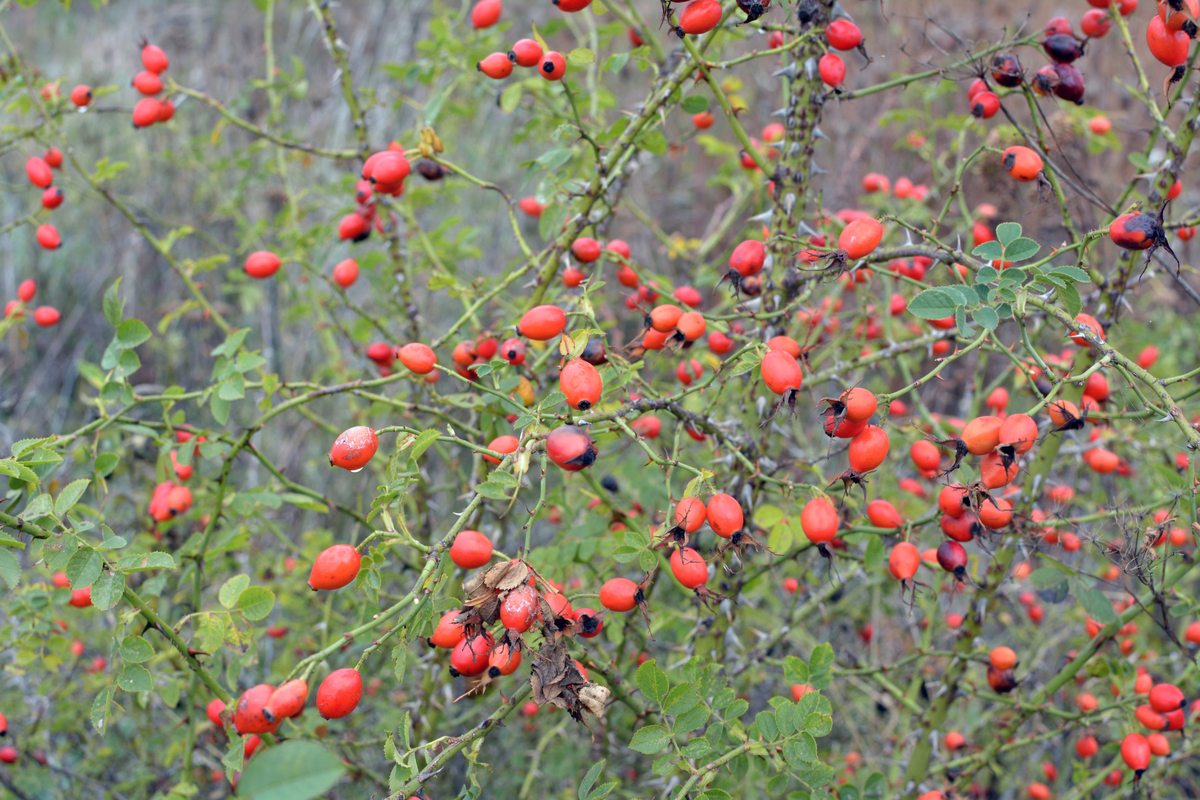
4. Enticing & Exciting!
A blooming rose hedge does more than just screen an area with green.
Roses’ fragrance, glossy foliage, and beautiful colorful blooms are exciting and enticing.
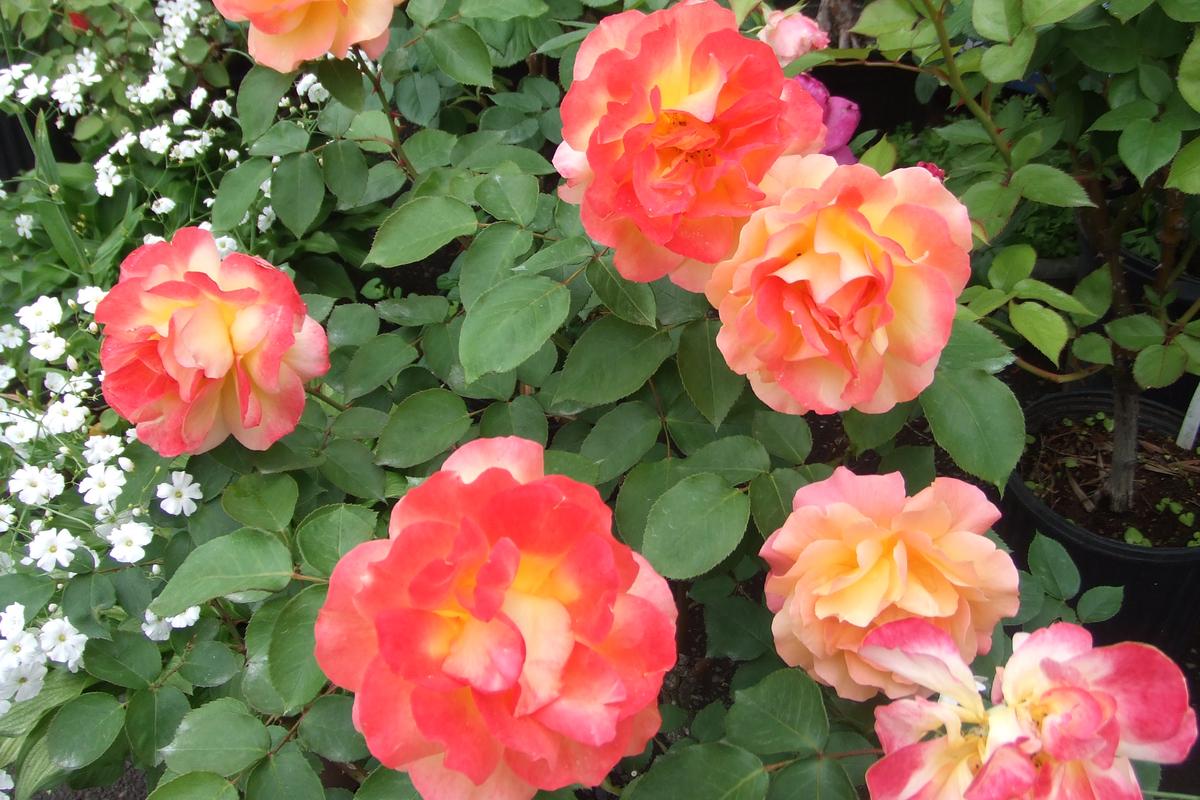
5. Dangerously Beautiful
Roses’ performance in the garden is undeniable with many thornless varieties that provide a safe sanctuary.
For improved security choose dangerously beautiful roses with deterring vicious thorns.
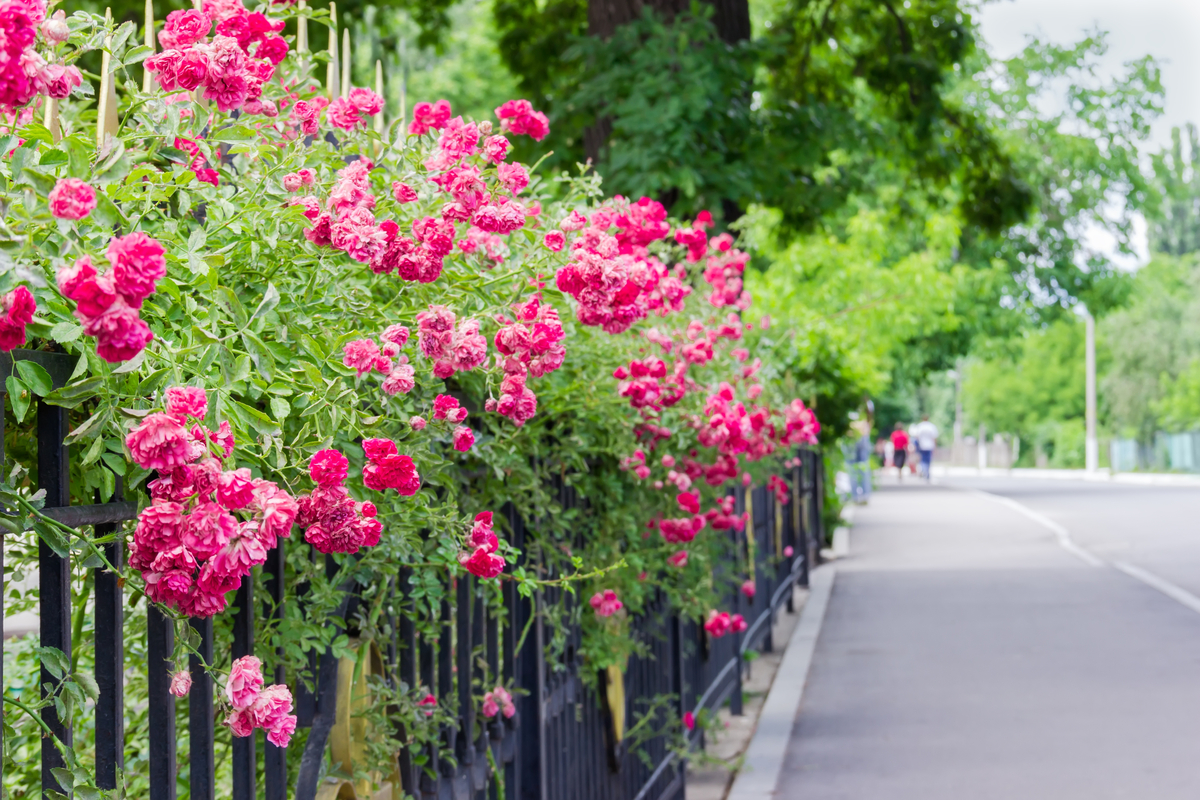
6. Be Hip!
A rose hedge may produce copious amounts of beautiful, brightly colored rosehips.
Rosehips are not only pretty to look at during winter, but they also provide food for wildlife during cold seasons.
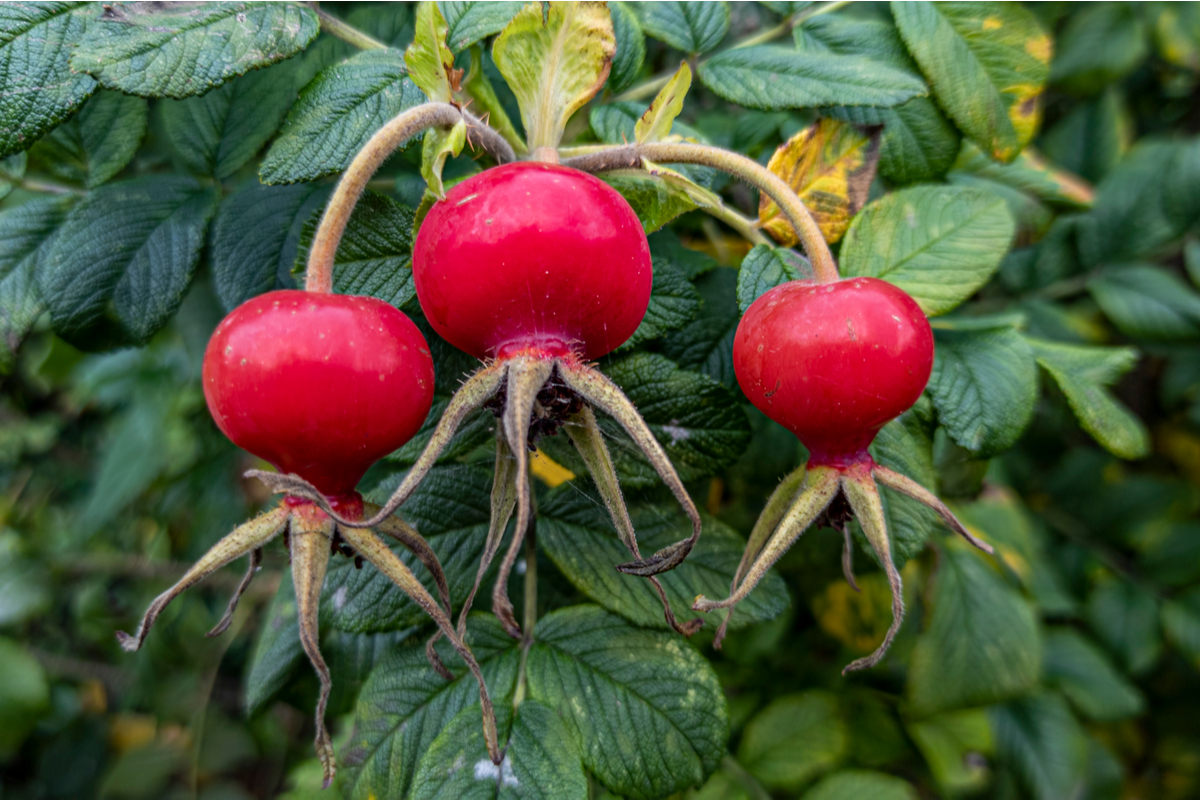
Interestingly, rosehips are edible and incredibly healthful and nutritious for us. Excellent ideas and recipes can be found in this article, 25 Reasons To Forage For Rosehips.
Moreover, rosehips are the primary ingredient in the age-defying rosehip seed oil which has amazing benefits for aging skin.
7. Get Together Now
While ensuring good air circulation, grow roses a little bit closer together to form a dense, full hedge.
Roses look gorgeous as individuals, but when planted into hedgerows, they make a serious impact.
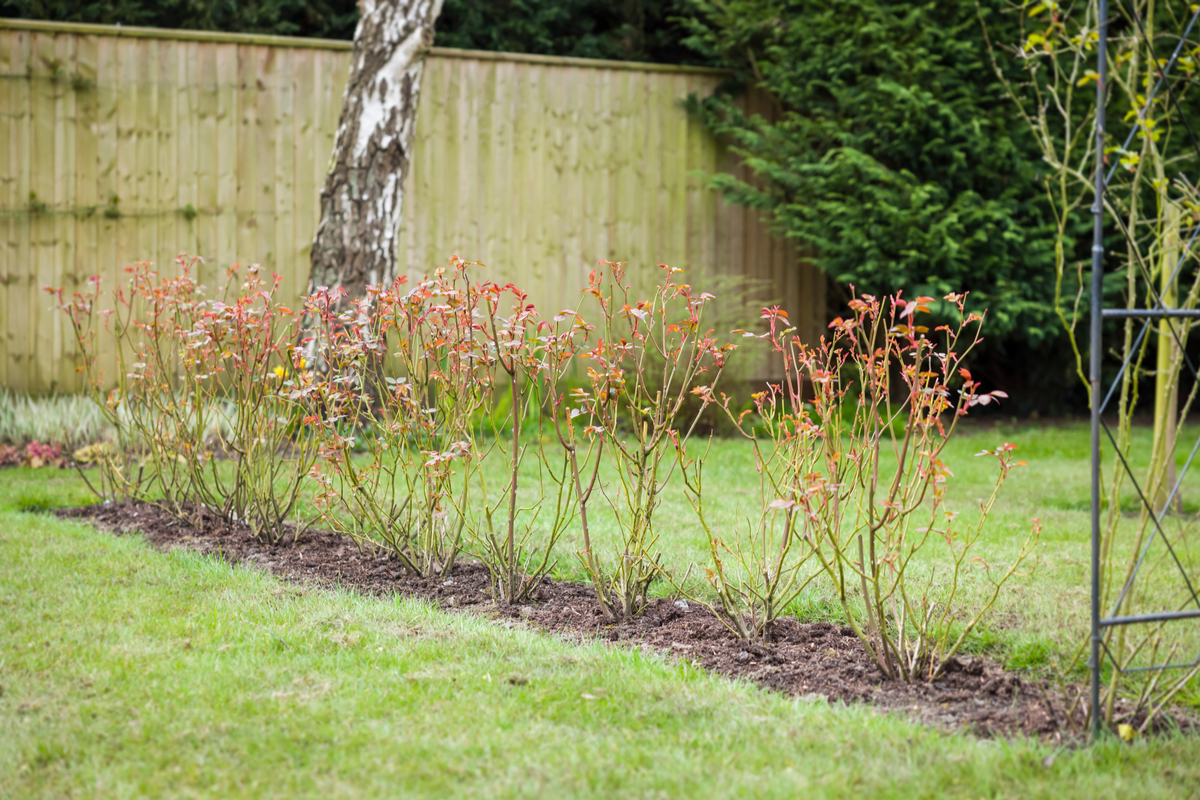
8. Mix it Up, Buttercup!
How do you choose just one style or color of rose among the thousands of rose cultivars for your rose hedge?
Excitingly, your hedge can have a rainbow of rose colors and flower styles. However, choose roses that grow the same height and thrive in the same growing condition for ease of maintenance.
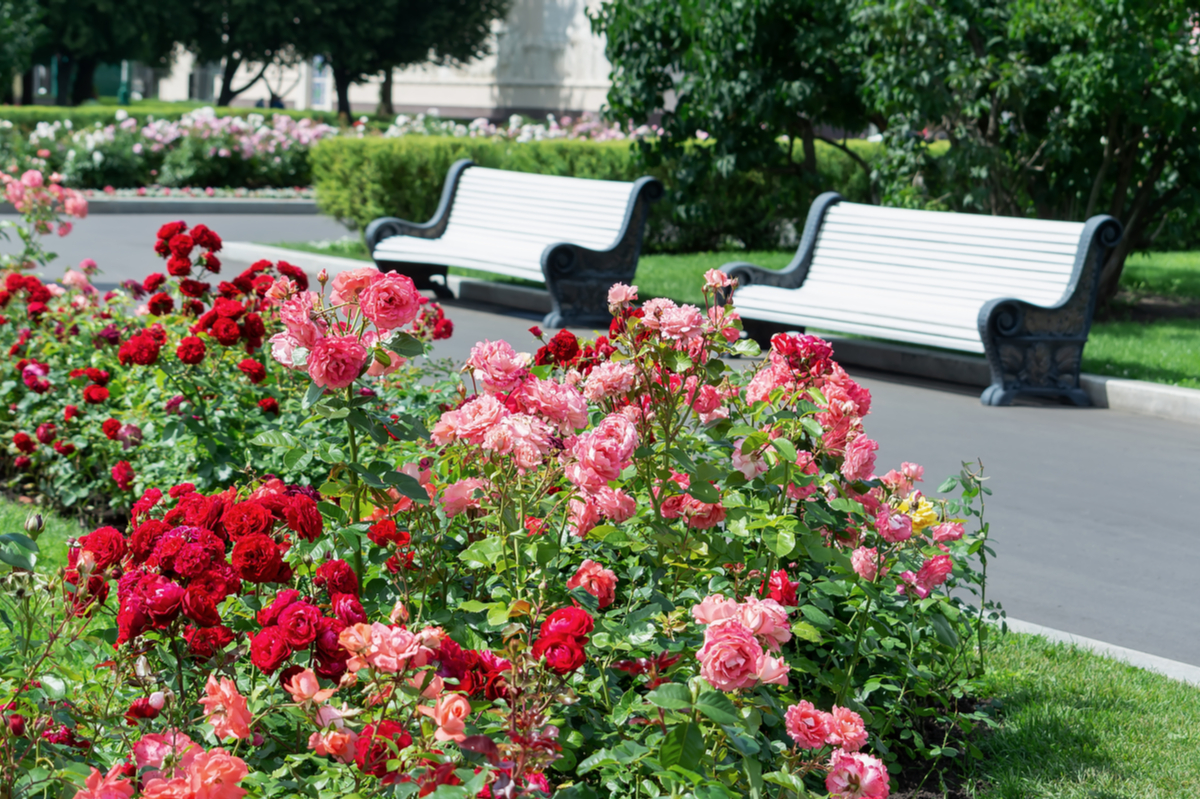
9. Rolling and Rambling
While a formal, perfectly sheared hedge has its uses in the blooming backyard, a rolling, rambling rose hedge has a creative, playful style all its own.
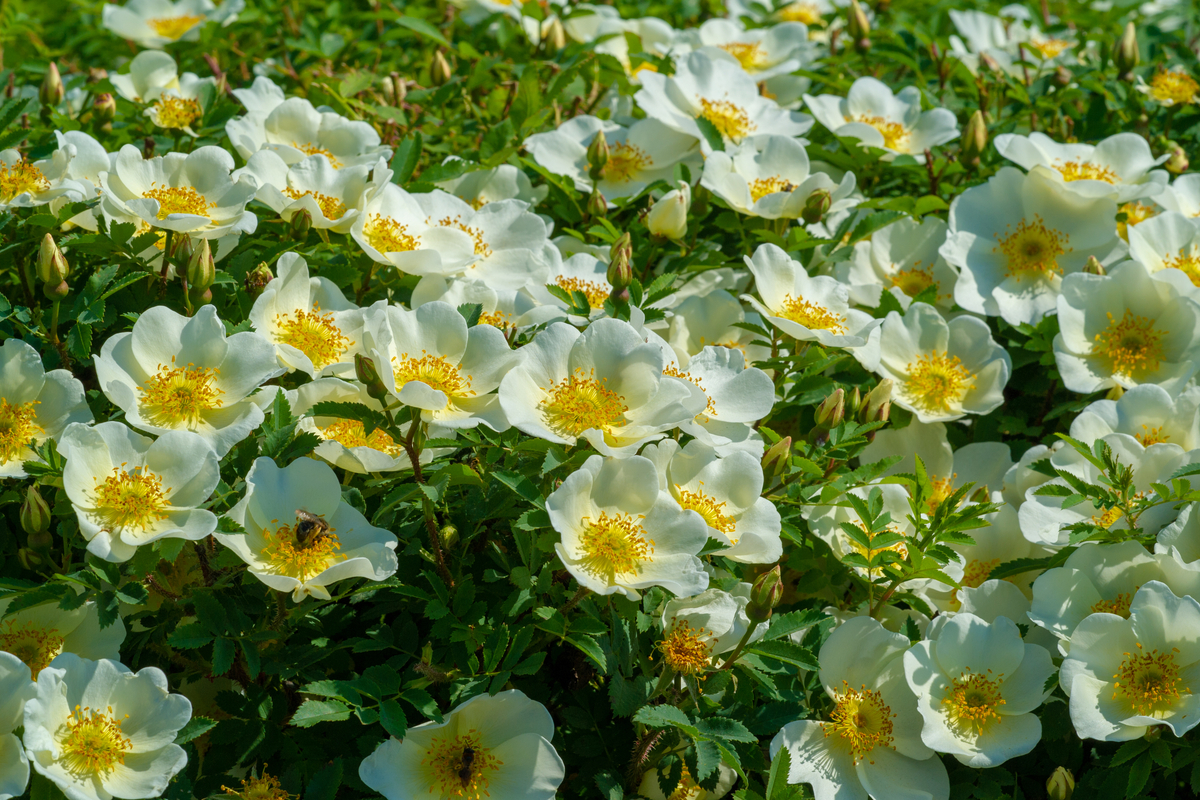
10. Garden Rose Rooms
With ideas of fancy hats, teatime, and croquet, is there anything more romantic than your own garden rose room?
A rose hedge will provide a bounty of blossoms for bouquets but imagine having entire rose-blooming hedge walls surrounding your outdoor spaces. Gorgeous!
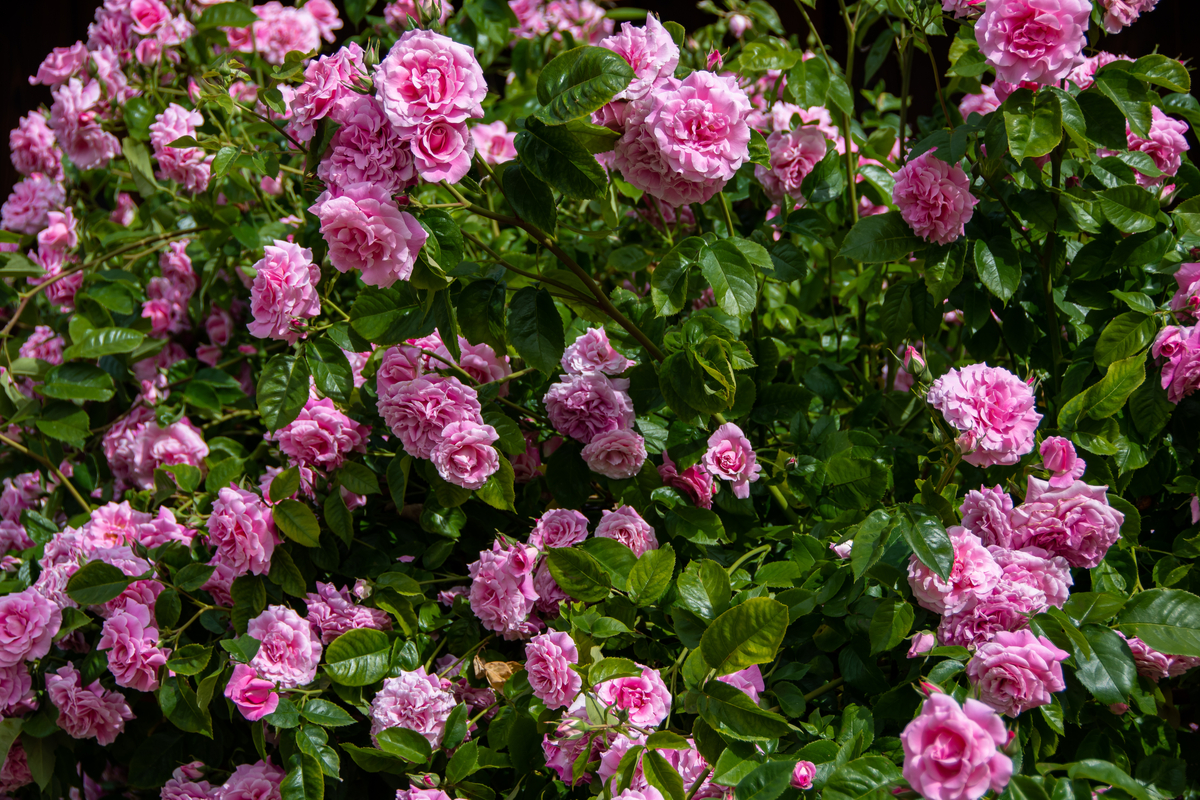
11. Roses In Blossom – Bring on the Bees & Butterflies
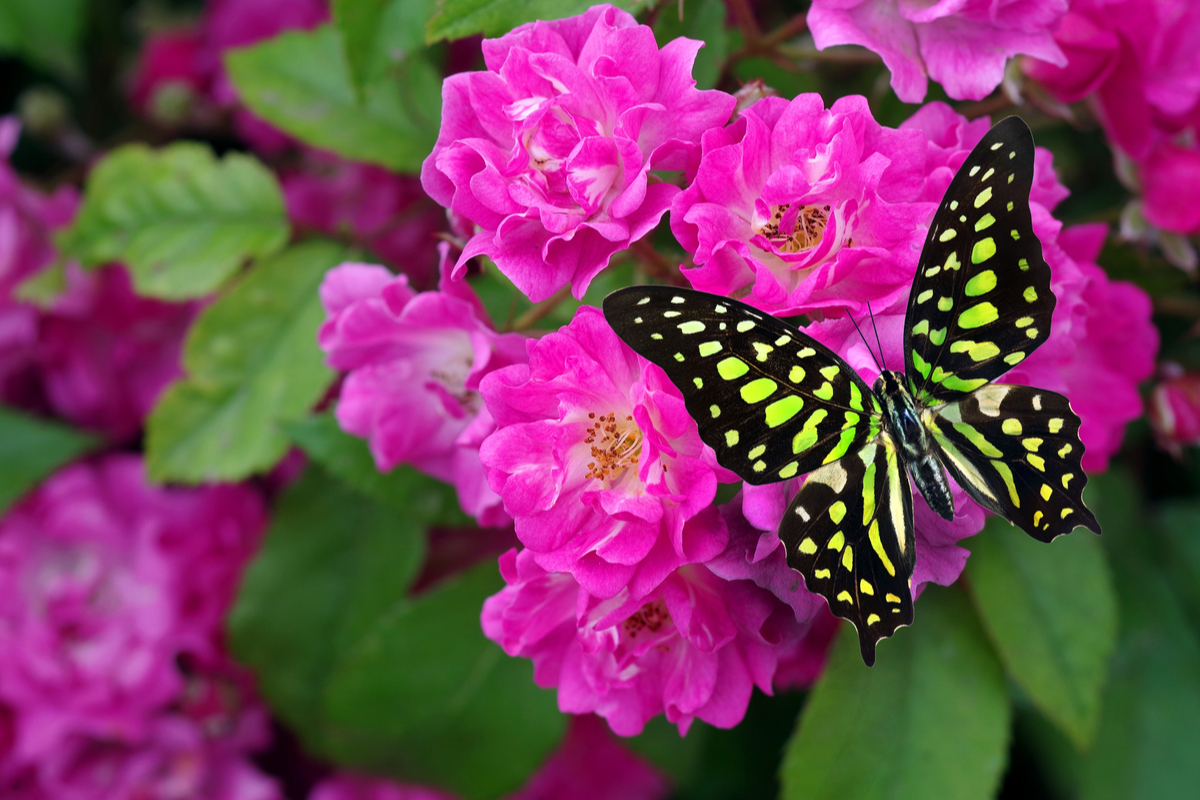
A rose hedge may feel entirely decadent but its pollen will feed bees, beneficial insects, and butterflies better than many more utilitarian hedge plants.
Letting late-season blooms develop into beautiful rosehips will provide a winter feast for visiting birds.
These luxuriously enhance your winter garden with colorful waxwings and pine grosbeaks.
12. Heavenly Scented
Rose fragrances may be powerful or delicate with scents that are sweet, spicy, musky, or citrusy.
Surrounding a garden space or creating privacy with a rose hedge will infuse the atmosphere with the rose’s perfume.
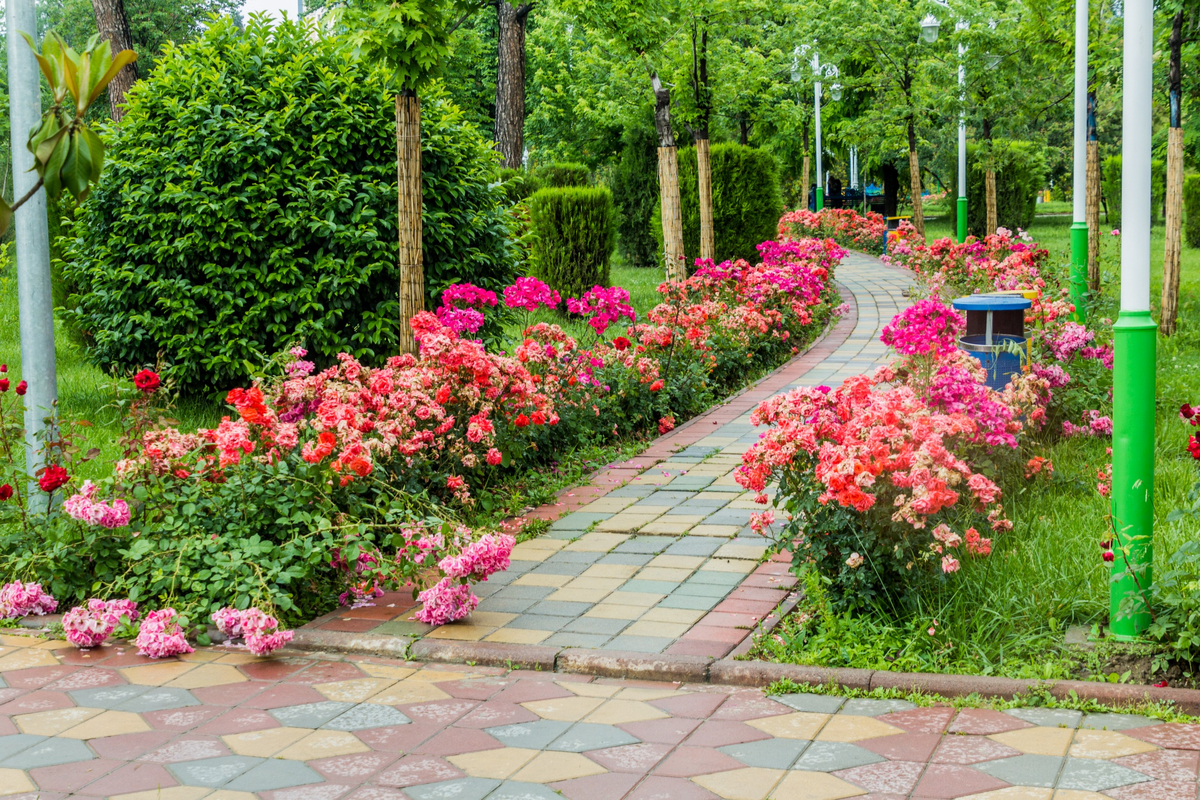
In addition to roses, here are 15 Fragrant Flowers for a Sweet-Smelling Garden.
13. Plentiful Rose Petals
Rose petals in abundance are pure magic! Potpourri, wedding celebrations, Valentine’s Day, rose jelly, and making your own scented cosmetics, you will wonder what you did before your rose hedge!
For a complete and compelling list of rose-petal-inspired recipes take a look at this article, 10 Brilliant Uses For Rose Petals (& 7 Ways To Eat Them).
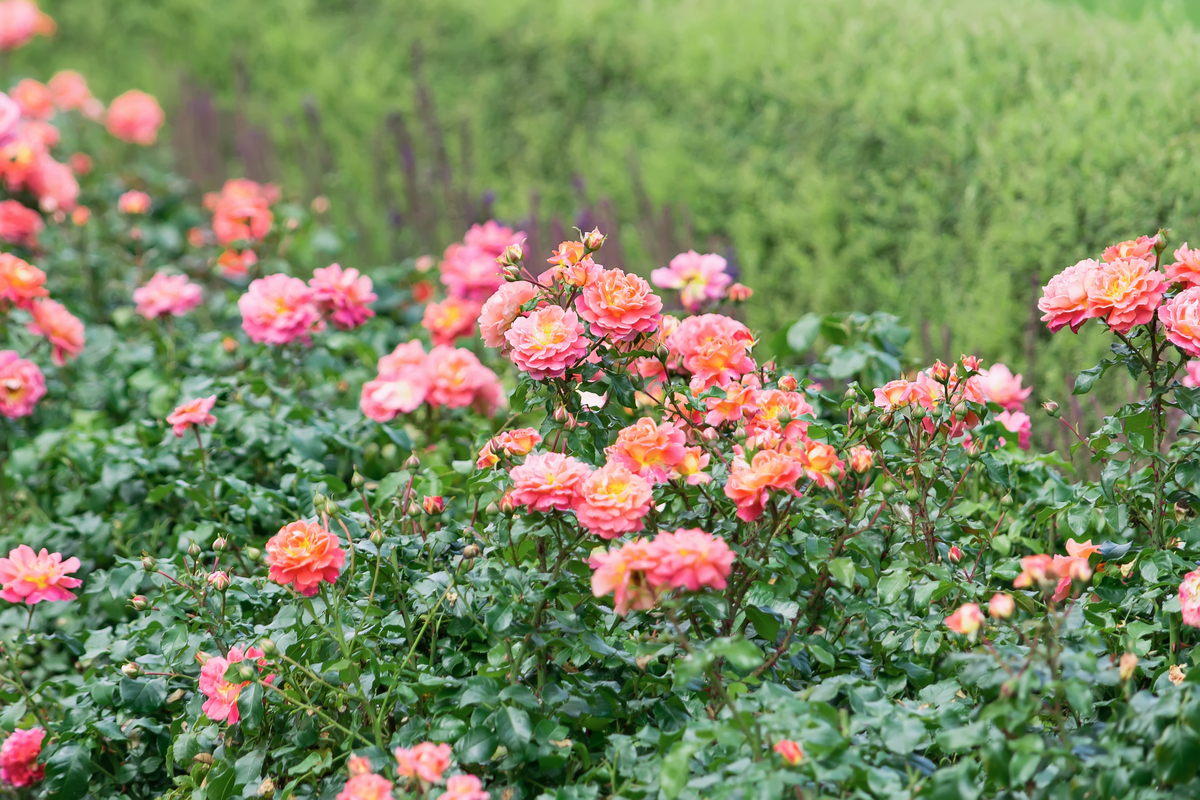
14. Rose-Inspired Crafts
If flower crafts are in your wheelhouse, your rose hedge will keep you in a plethora of materials.
Dried rosebuds, petals, whole rose blooms, and rosehips each have their valuable place at the craft table.
Including roses, many inspired dried flower ideas can be found in this article, 15 Plants to Grow for Dried Flowers & How To Dry Them.
Choosing the Best Roses to Grow as Hedges
For your rose hedge, choose roses that are hardy to your growing zone with an upright sturdy growth habit.
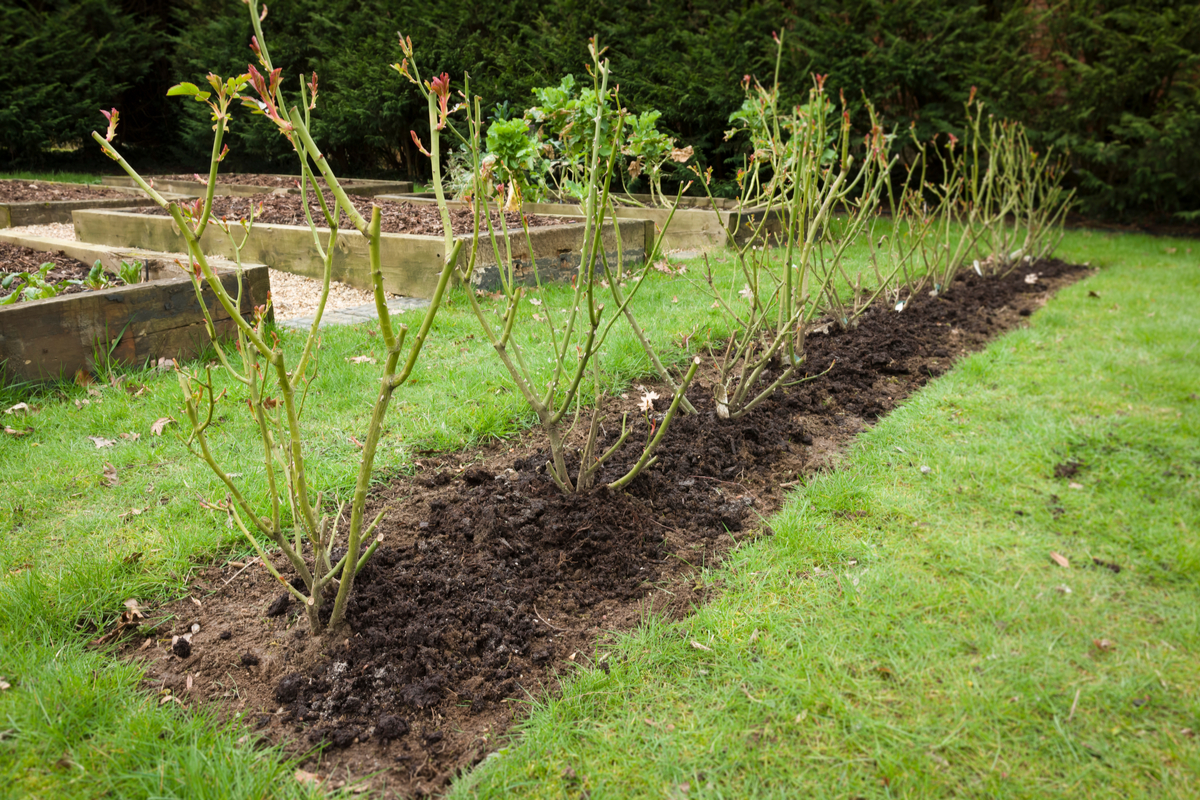
Know your desired hedge height and choose accordingly. A rose with a mature height of 3 feet will never fill your 6-foot-tall rose hedge hopes. Similarly, keeping vigorous 6-foot-tall rose shrubs to a tidy 3 feet tall border will inevitably be a lot of work each season.
One-time bloomers will steal the show for weeks in spring, while repeat bloomers have continuous blooms from late spring to the first frost.
With appropriate support structures, climbing roses will make a spectacular blooming screen and will grow to incredible heights.
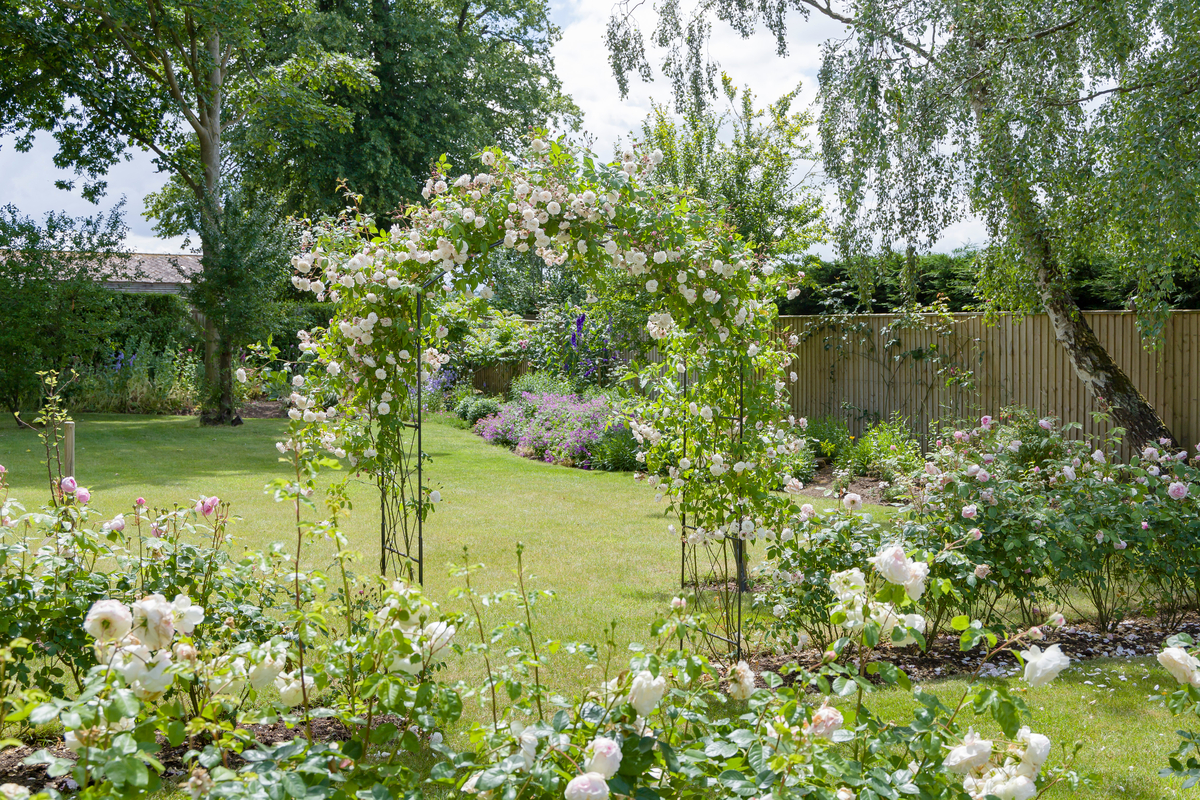
Why Use Own-Root Roses For Hedges?
You may benefit from growing your rose hedge from own-root roses. Grafted roses produce suckers with rose canes of different growing habits, flower colors, and styles. This might be hard to keep track of when maintaining a full hedge of roses.
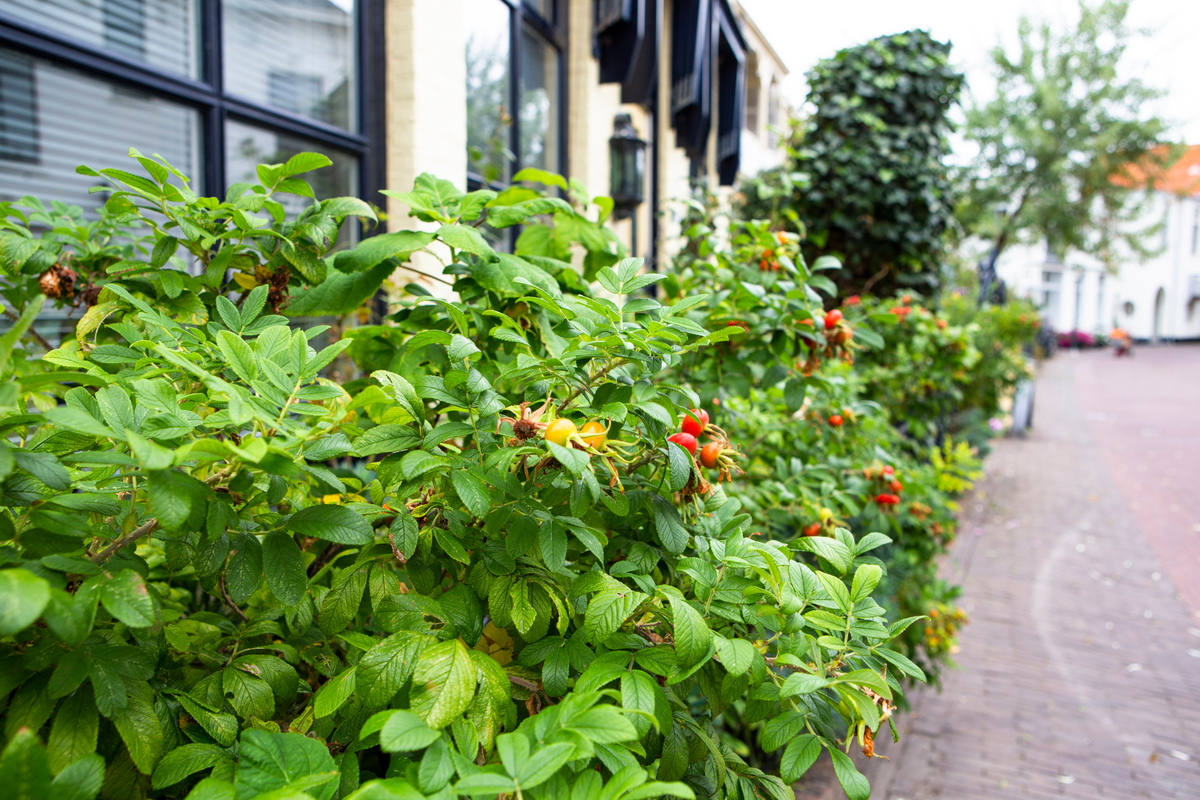
Suckers produced from own-root roses will identically match the hedge rose. These additional rose canes will only help to fill in your rose hedge.
Best Rose Varieties for Hedges
Rugosa Roses Available Through Heirloom Roses
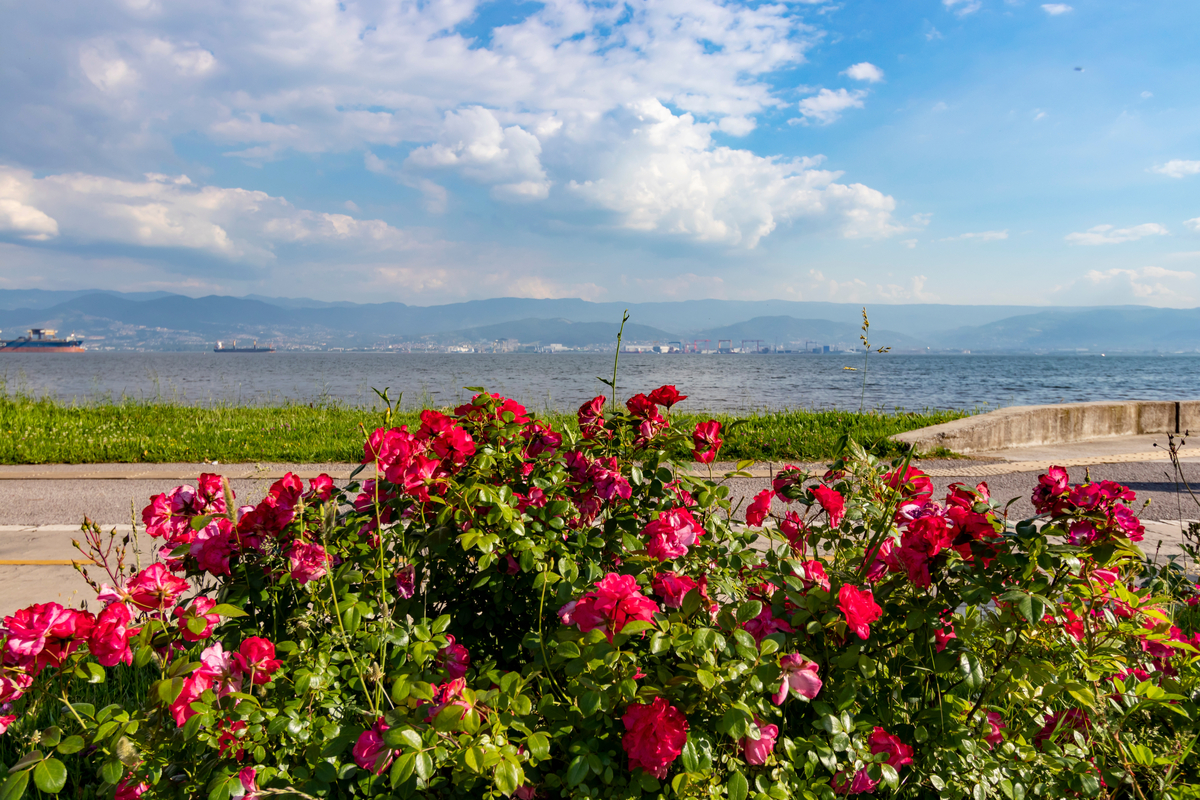
Zone: 3 to 10 depending on the variety
Size: 2 to 6 feet
Knock Out Roses
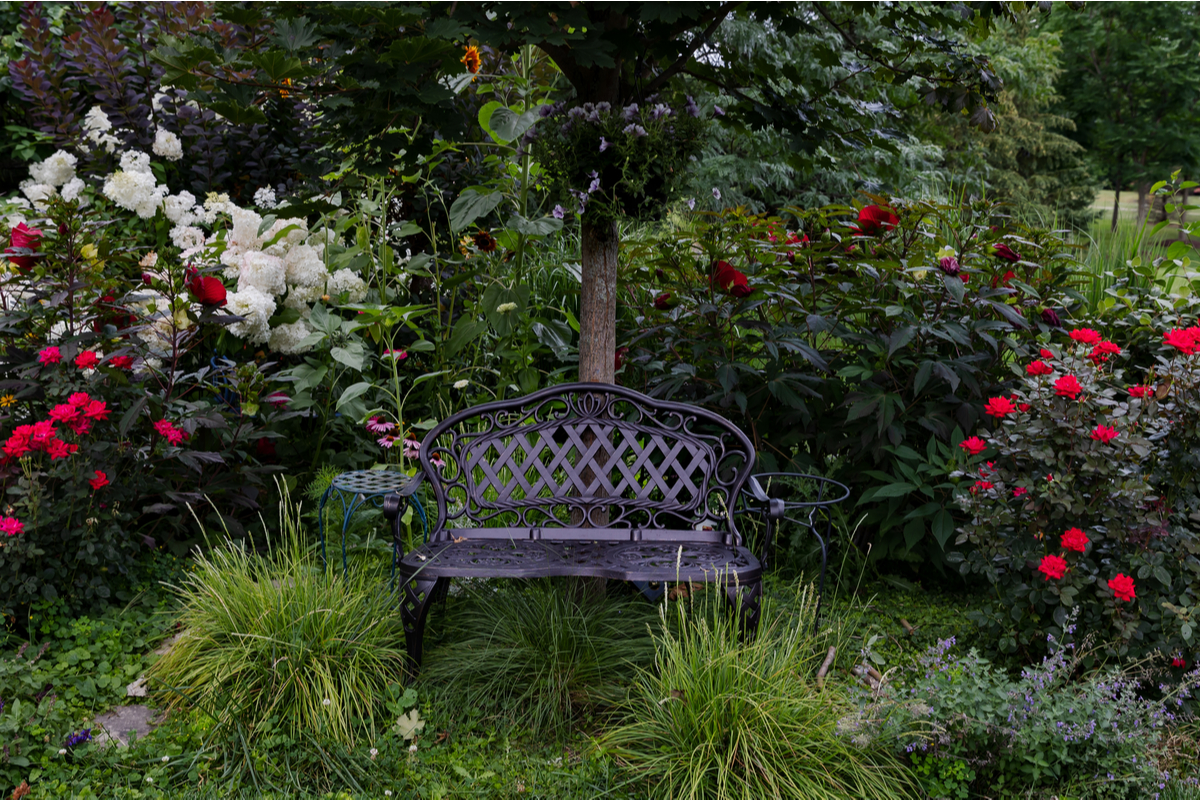
Zone: 5 to 11
Size: 3 to 4 feet
English and Shrub Roses Available Through David Austin Roses
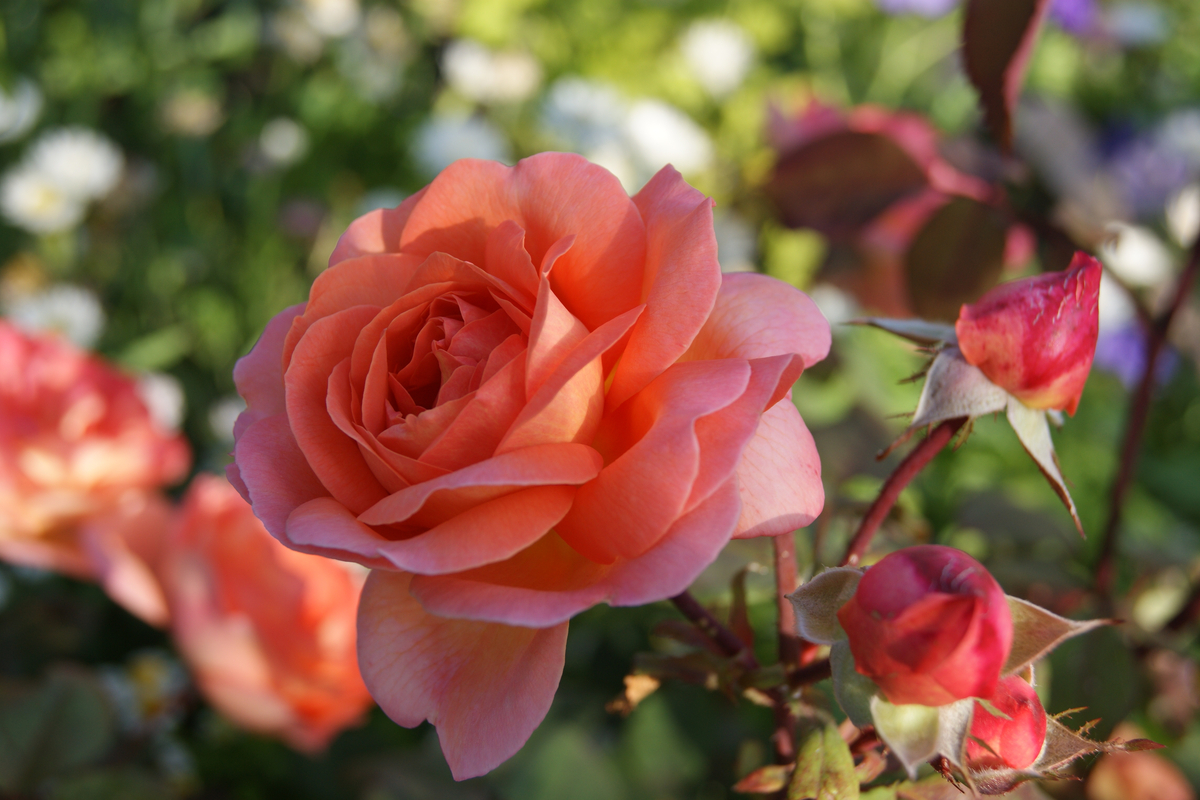
Zone: 4 to 9 depending on the variety
Size: 3 to 5 feet
Proven Winners Sunorita Rose®
Zone: 5 to 9
Size: 3 to 4 feet
Proven Winners Oso Easy® Urban Legend®
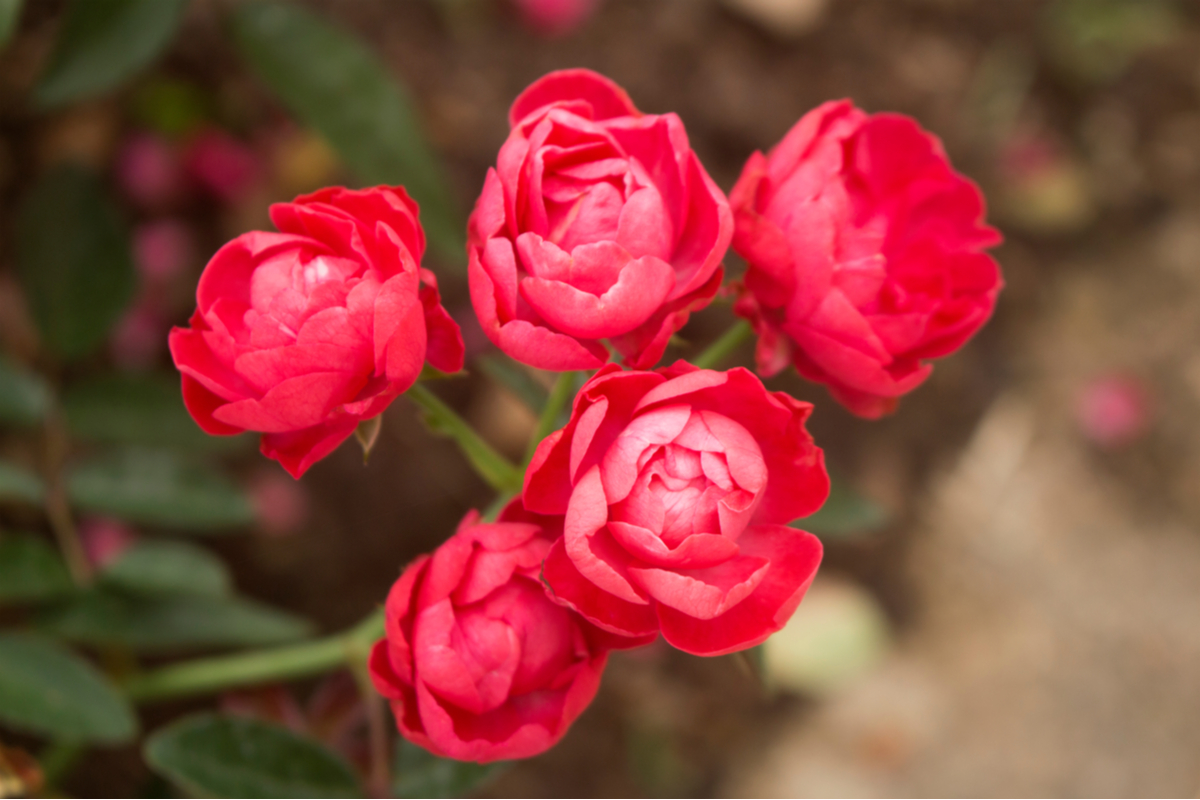
Zone: 4 to 9
Size: 3 to 4 feet
Planting a Rose Hedge
Choose a site in full sun. A slightly sheltered place will help to protect wind from blowing away all your gorgeous petals. Ensure water availability to the site. Roses are relatively thirsty and will benefit from automatic irrigation.
Prepare the site and amend soil with well-rotted compost. Ensure the site is weed free, and the soil is loose and well-draining.
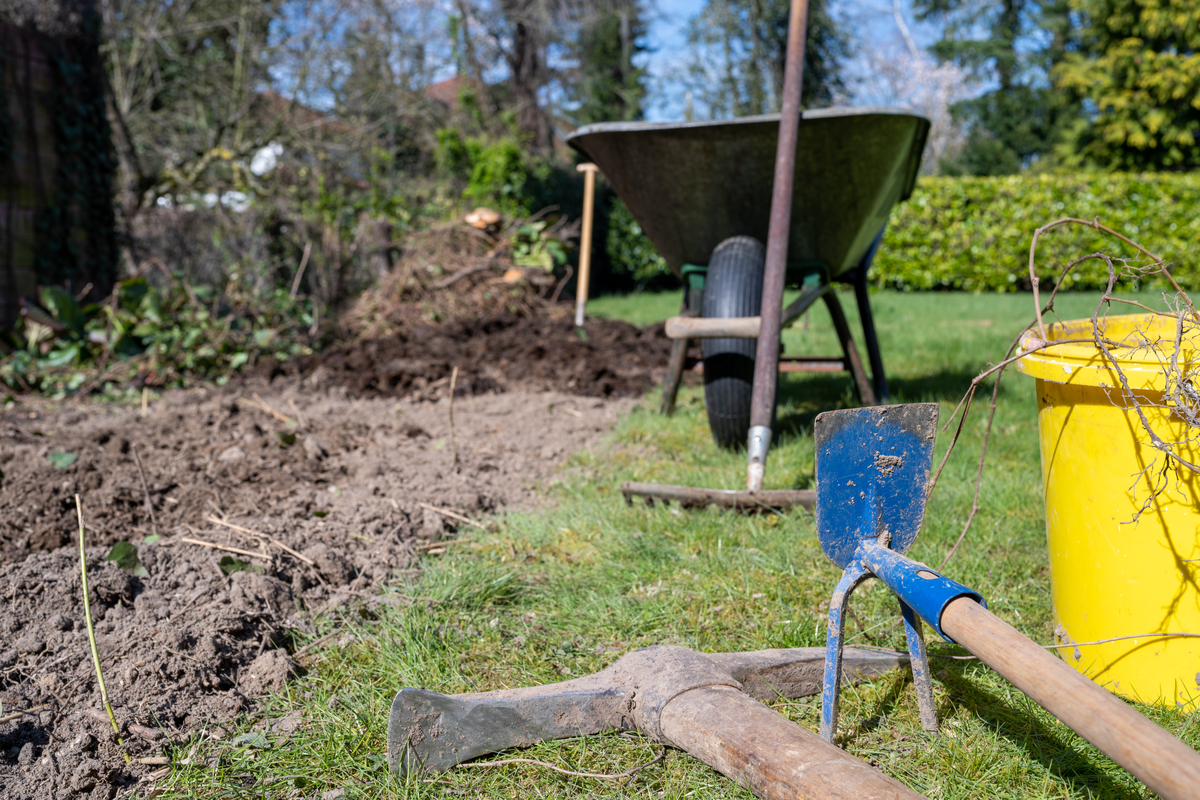
Create a beveled edge or install edging. This will help your hedge from becoming overwhelmed with weeds and grass. A nice edge to mow or trim up to keeps your rose hedge safe from damage while looking fantastic.
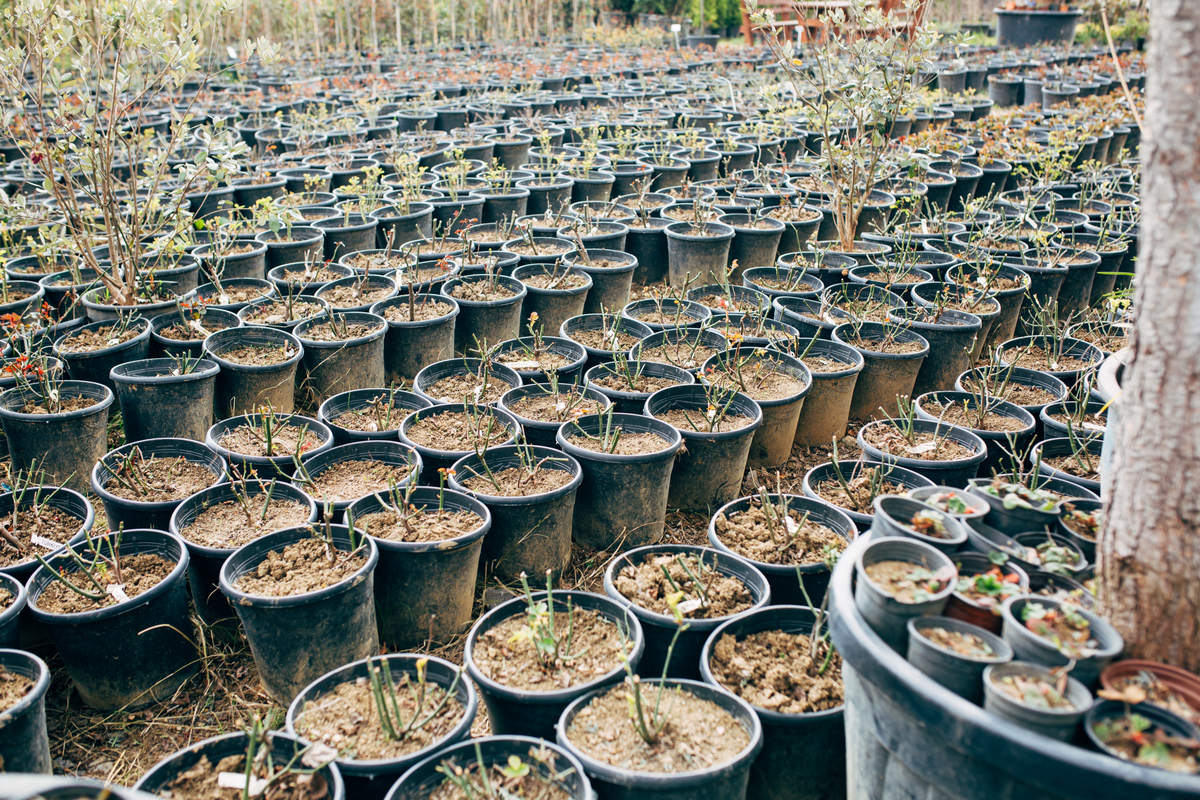
Use a string line when planting your roses. This will help ensure a nice, straight row of roses.
Dig holes that are twice the size of each roses’ root ball. Snug each plant in place with soil and tamp it down.
Plant during cool, wet weather or early in the morning to avoid drying out the roses’ roots.
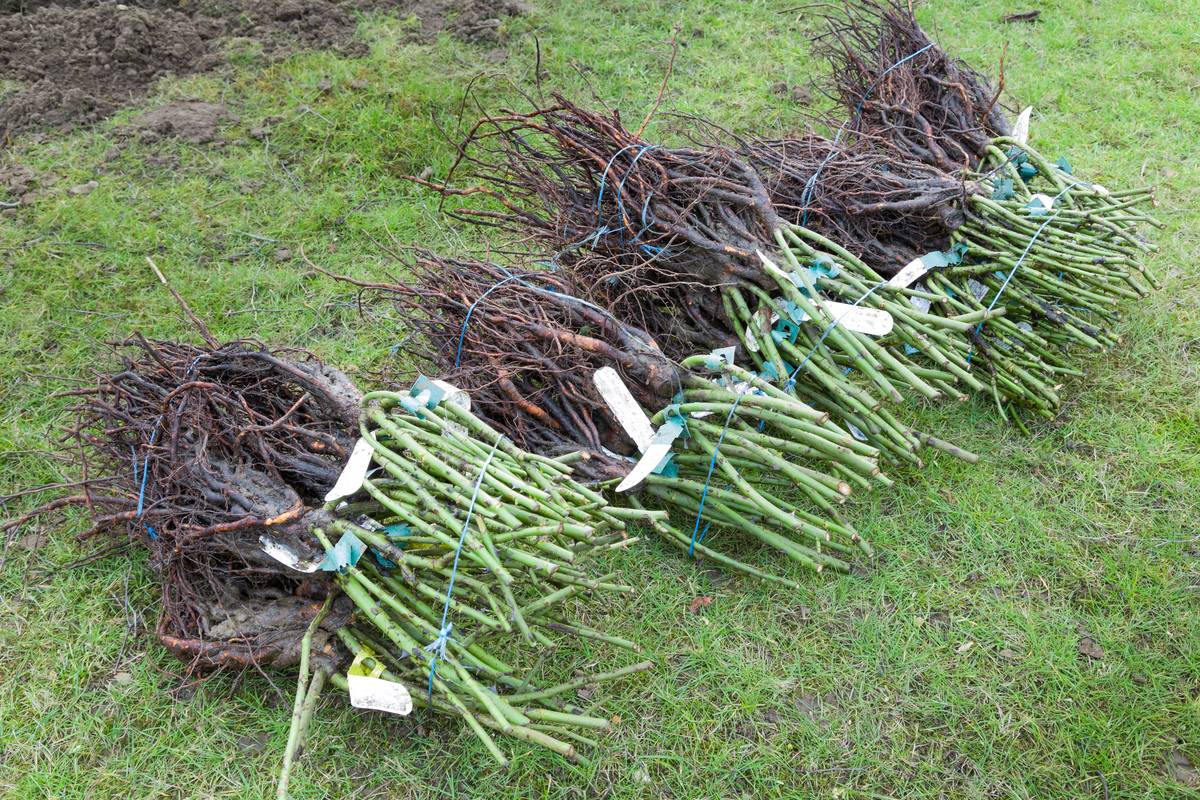
Follow planting instructions. However, for your rose hedge to fill in adequately, plant roses twice as close to each other to avoid large gaps between each rose.
Water thoroughly for the first few months while your roses become established. An automatic irrigation system or soaker hoses work great. To minimize disease, soak the roots without splashing water in rose leaves.
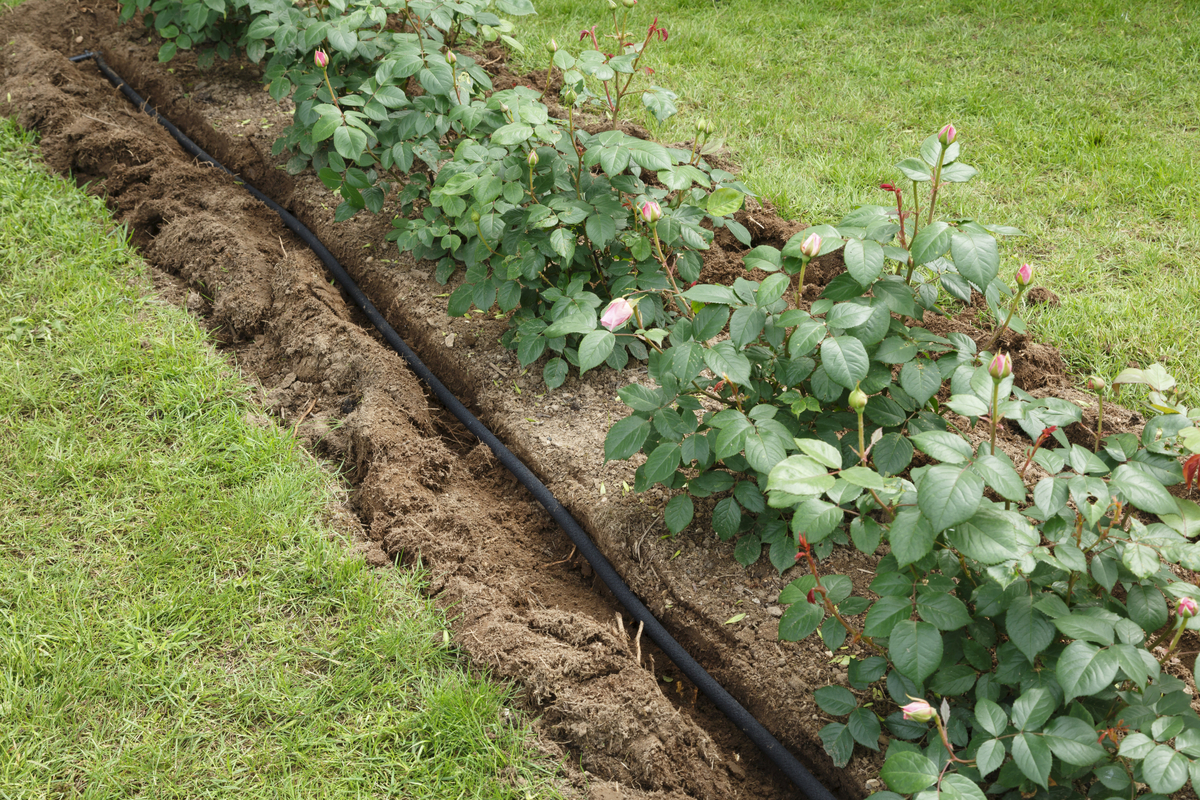
For a spectacular look, apply compost or bark mulch under your roses. This conserves moisture, improves disease resistance, and suppresses weeds.
Growing Roses
Our article, How to Propagate Roses From Cuttings, is helpful for starting your favorite roses from cuttings.
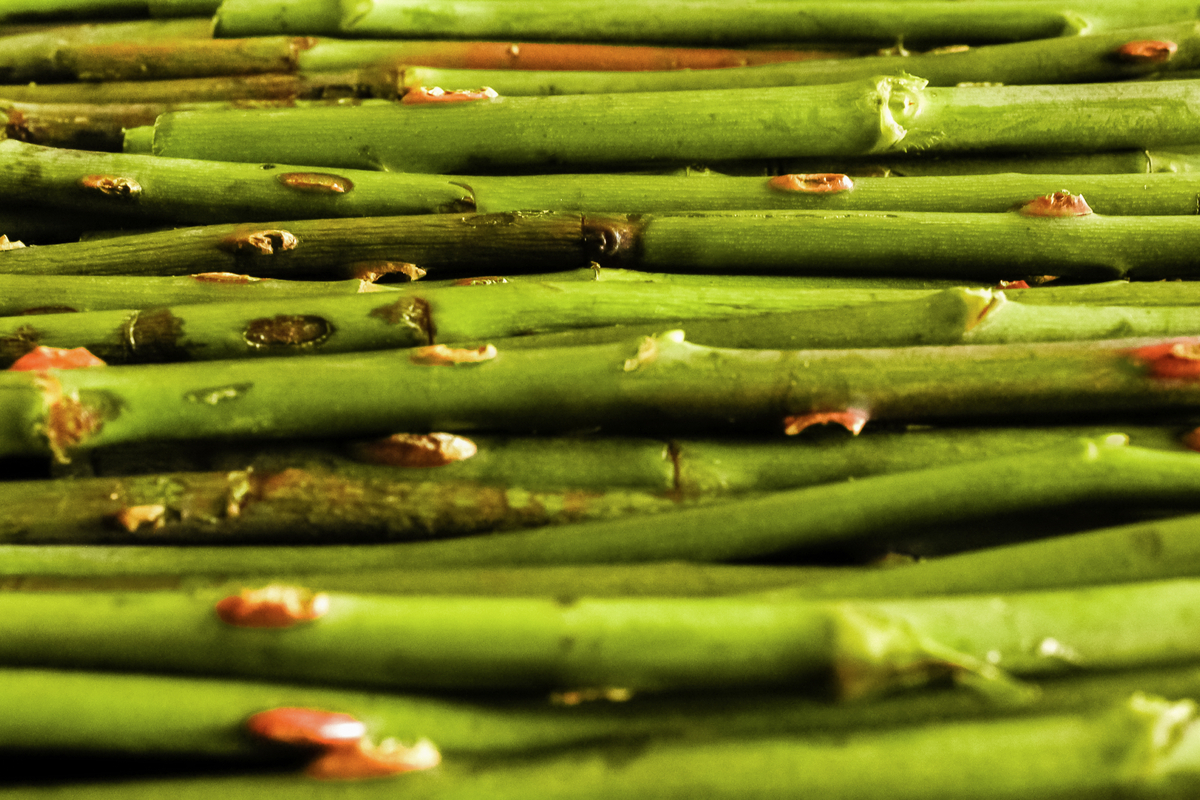
Your local nursery or online sources may have container or bareroot options for purchasing large quantities of roses.
Ready-to-go mature roses in pots will be a wonderful way to jump start your rose hedge.
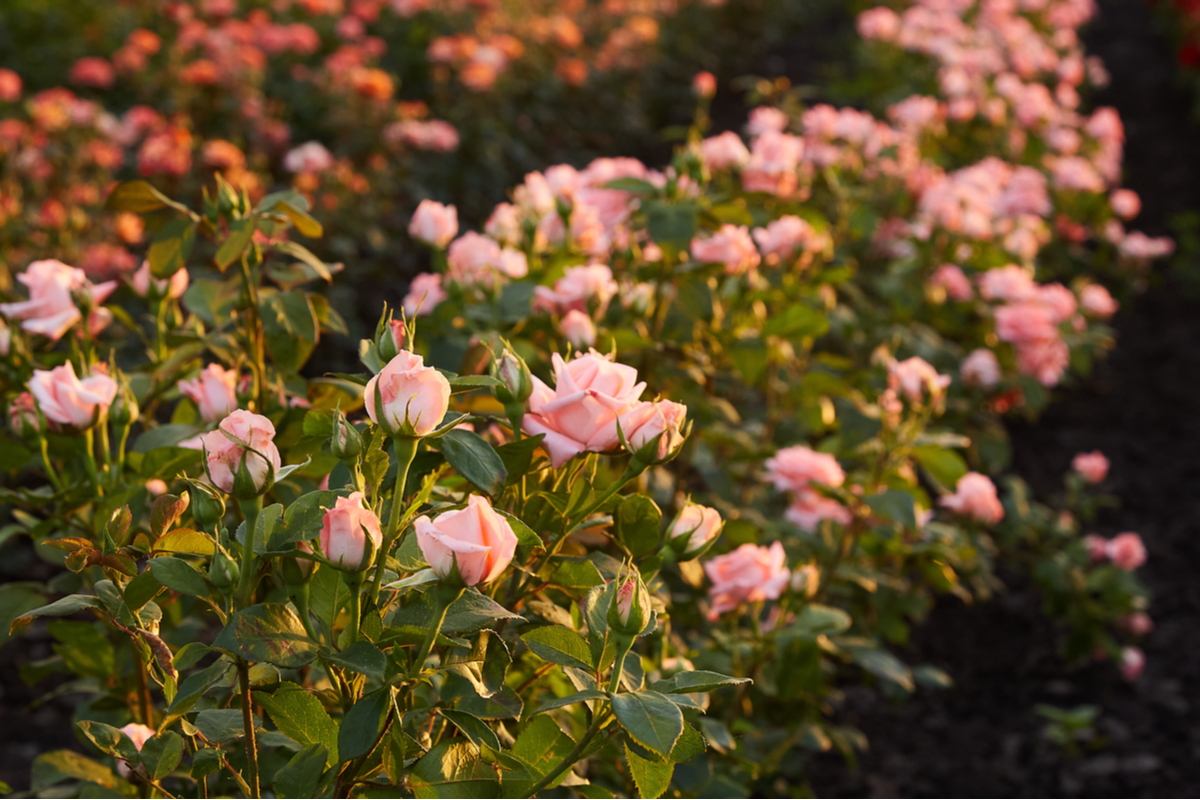
Caring for Your Rose Hedge
Most roses love full sun, well-draining rich soil, and plenty of water.
Choosing disease-resistant varieties known to do well in your climate is the first step to success.
Keeping an eye out for pests and disease, diligent deadheading as well as seasonal pruning are general rose care necessities.
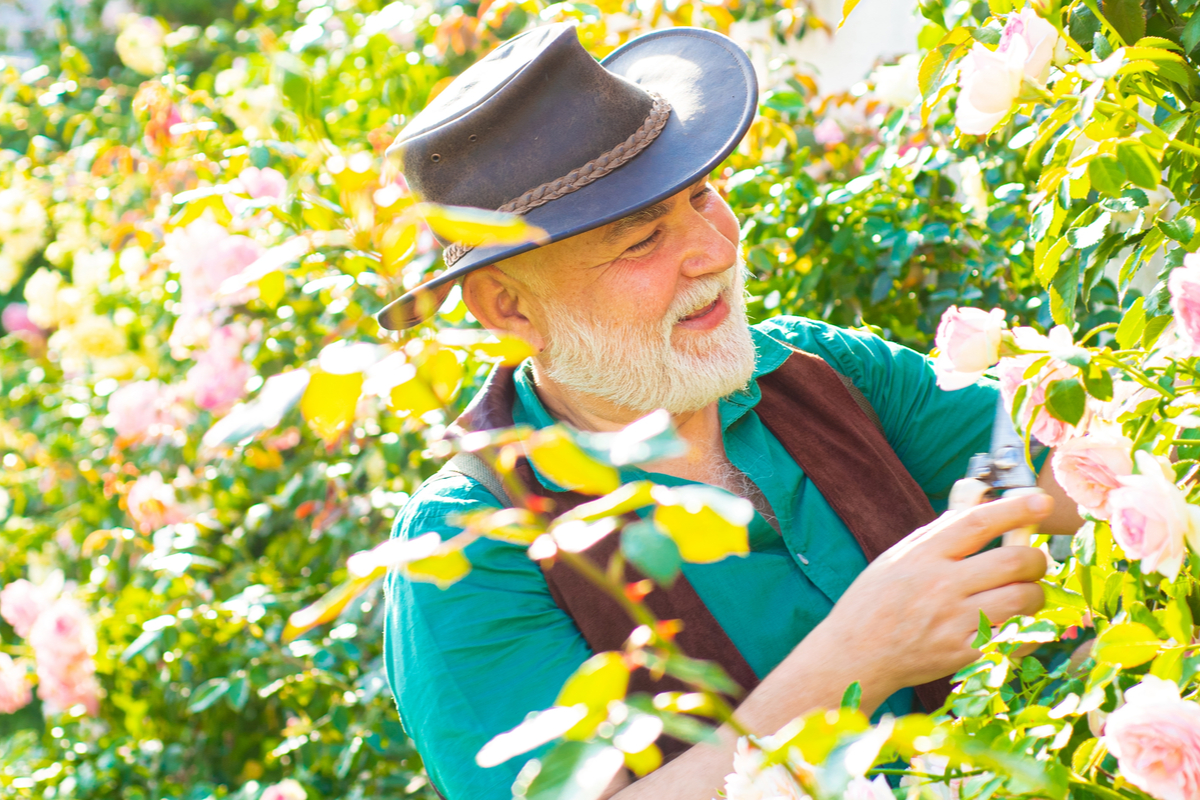
Your rose hedge will give years of delight when you follow these spring rose care tips.
Well-watered roses planted in rich, well-draining, slightly acidic soil in full sun do well. Here is some excellent advice on How to Fertilize Your Roses.
Want your rose hedge to be smothered in astonishing blossoms? Here are our top secrets to get more blooms from your rose hedge.
More Than Decadent, Rose Hedges Are Also Incredibly Useful
A blooming rose room welcome to bees, butterflies, teas, and tinctures.
Vicious thorns deter intruders while vivacious blossoms entice welcomed guests.
With four seasons of interest outdoors you can fill bouquet vases, the crafting cabinet, and the pantry from your spectacular blooming rose hedge.
Want more hedge ideas? Check out:
